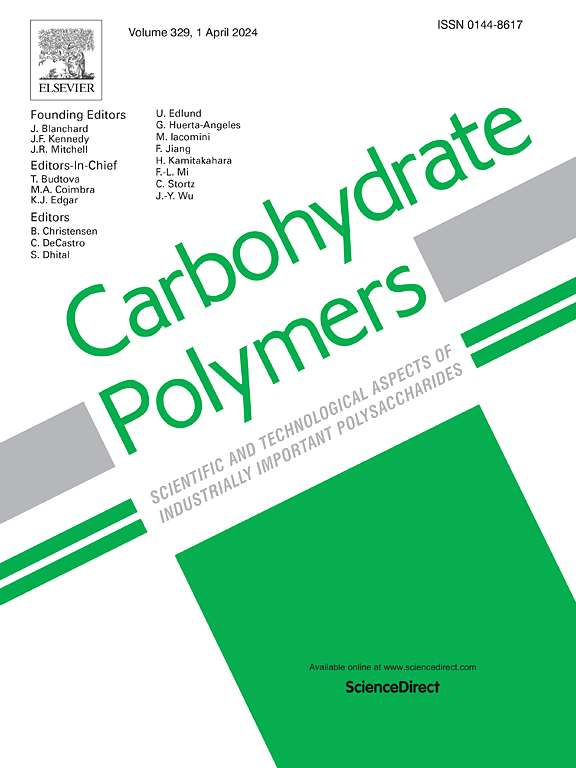Konjac glucomannan foams integrated with bilayer phase change microcapsules for efficient heat storage and thermal insulation
IF 10.7
1区 化学
Q1 CHEMISTRY, APPLIED
引用次数: 0
Abstract
The traditional foams can only block heat loss, and cannot effectively store and release heat energy on demand to extend the insulation time. In this work, the paraffin-rich monolayer microcapsules were prepared using negatively charged phosphorylated cellulose nanofibers (CNF) as the emulsifier of Pickering emulsion. The positive chitosan was assembled on the surface of the monolayer microcapsules through an electrostatic layer-by-layer self-assembly method to prepare the bilayer microcapsules. Konjac glucomannan (KGM) was used as the dispersive medium of bilayer microcapsules and the gel skeleton to prepare phase change foam through freeze-drying. The foams exhibited excellent water resistance, mechanical properties, and thermal stability. The double-shell structure of chitosan/CNF microcapsules and the capillary action of KGM foam could effectively inhibit paraffin leakage. Moreover, the paraffin content of KCCP-4 foam was as high as 72.7 %, and the enthalpy of melting and crystallization were as high as 149 J/g and 146 J/g, respectively. The thermal conductivity and infrared thermal imaging results demonstrated that the KCCP-4 foam had excellent thermal insulation and energy storage properties. This study provides a simple and effective design strategy for the application of thermal insulation and energy storage foams in smart textiles.
求助全文
约1分钟内获得全文
求助全文
来源期刊

Carbohydrate Polymers
化学-高分子科学
CiteScore
22.40
自引率
8.00%
发文量
1286
审稿时长
47 days
期刊介绍:
Carbohydrate Polymers stands as a prominent journal in the glycoscience field, dedicated to exploring and harnessing the potential of polysaccharides with applications spanning bioenergy, bioplastics, biomaterials, biorefining, chemistry, drug delivery, food, health, nanotechnology, packaging, paper, pharmaceuticals, medicine, oil recovery, textiles, tissue engineering, wood, and various aspects of glycoscience.
The journal emphasizes the central role of well-characterized carbohydrate polymers, highlighting their significance as the primary focus rather than a peripheral topic. Each paper must prominently feature at least one named carbohydrate polymer, evident in both citation and title, with a commitment to innovative research that advances scientific knowledge.
 求助内容:
求助内容: 应助结果提醒方式:
应助结果提醒方式:


